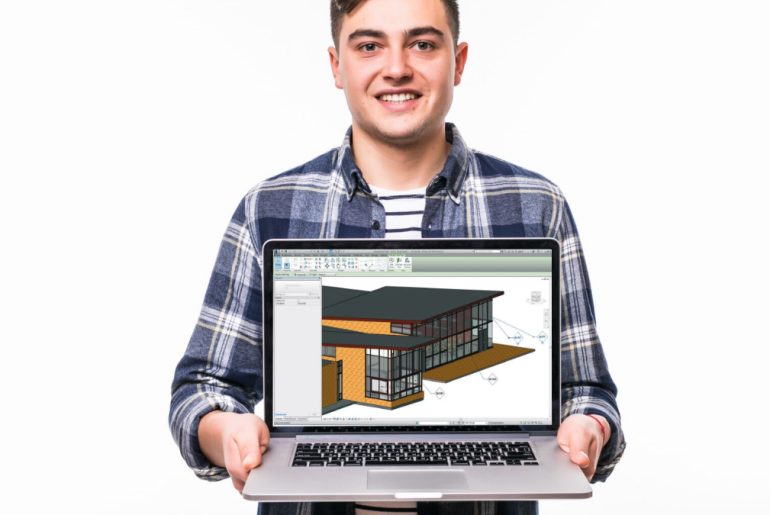The realm of Architecture, Engineering, and Construction (AEC) has witnessed a pioneering shift. Advancements in technology are changing the way professionals in these fields approach their work, leading to improved efficiency, cost-effectiveness, and sustainability. An important catalyst for this is Revit modeling. This avant-garde technology has morphed traditional design dynamics, presenting industry professionals with an influential tool for visualization, collaboration, and documentation.
As the industry changes, new trends and innovations in Revit modeling will shape the industry. In this article, we delve into these emerging trends that are redefining the sector. Ranging from Artificial Intelligence (AI) algorithms to sustainable design practices, these developments are set to overhaul building design.
Elevating Collaboration: The Power of Building Information Modeling (BIM) Integration
Enhanced collaboration is a cornerstone trend in Revit modeling. With the help of cloud-based platforms and real-time project management tools available today, architects and designers can now liaise fluidly with stakeholders worldwide. This heightened connectivity paves the way for improved communication and faster decision-making processes resulting in streamlined design procedures.
Further, BIM platforms allow multiple disciplines to converge on a single project – ensuring design strategies embrace a holistic approach. Without a doubt, this ranks as one of the most impactful advancements within Revit modeling territory. BIM integration fosters seamless collaboration between architects, engineers, contractors and all stakeholders involved throughout a project’s lifecycle. Real-time data sharing paired with centralized project management translates into simplified workflows, fewer errors and enhanced coordination being the primary benefits. This trend shows no signs of slowing down as industries increasingly appreciate the benefits of BIM integration for efficient project delivery.
Mobilizing Technology: Safety Takes Precedence
Professional Revit modeling services employ Artificial Intelligence (AI) and Machine Learning (ML) to provide cutting-edge support to firms. AI algorithms can sift through vast data quantities, generating optimized designs based on defined parameters. This not only saves time but also guarantees that buildings embody energy efficiency and sustainability.
By leveraging AI and Machine Learning algorithms, Revit modeling services offer predictive insights to identify potential hazards and address them before they arise.
Virtual Reality: Redefining Design Visualization
Virtual Reality (VR) has raised the bar in design visualization. Architects and designers can now immerse themselves and their clients in virtual environments that mirror real-world spaces with uncanny accuracy. VR enables interactive exploration of designs before construction commencement, thereby aiding decision-making processes.
By coupling Revit modeling with VR platforms, you can allow your stakeholders to experience designs in a remarkably authentic and engaging way, paving the way for informed design decisions.
Millwork Drawing Services: The Detailing Edge
Beyond Revit modeling services, millwork drawing services form a crucial facet of building design. These drawings furnish detailed plans for custom woodwork and cabinetry within structures. This ensures error-free manufacturing and installation while helping architects and contractors bring their blueprints to life with precision and efficacy.
In architectural projects, millwork drawing services are increasingly recognized as integral components of Revit modeling. These services deliver precision detailing, guaranteeing accurate fabrication and installation of millwork components. Along with comprehensive 3D models and intricate drawings, manufacturers can streamline production processes achieving optimal levels of efficiency.
Robotic Automation: The Future of Construction Processes
The combining of robotics with automation within the AEC industry is revolutionizing how buildings are designed, constructed, and maintained. Here too, Revit modeling plays a pivotal role in enabling robotic systems to analyze complex geometric data and execute tasks with unmatched precision. Robots are now entrusted with repetitive tasks such as bricklaying, concrete pouring, and even aerial inspections. This reduces human error whilst enhancing productivity across construction sites.
Conclusion
The future narrative of Revit modeling will be shaped by the integration of BIM, AI, VR, ML, Revit modeling services, Millwork Drawing Services and robotic automation. This collective force will transform how the AEC industry and manufacturers approach their work. These burgeoning trends are enhancing collaboration, refining design visualization, bolstering safety measures, enabling precision detailing for millwork components and automating construction processes. Technology’s rapid advancement has reshaped our lives in numerous ways and Revit modeling will continue to mold the future of the AEC industry. Embracing these innovations promises to culminate in enhanced project delivery and positive outcomes for all stakeholders involved.

